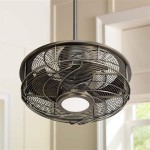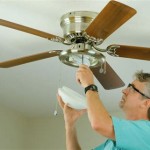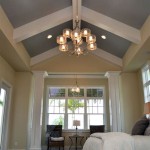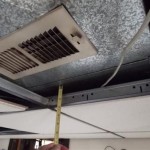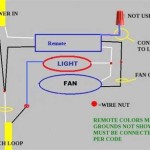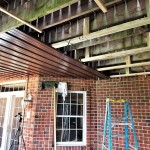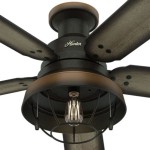Everything You Need to Know About In-Ceiling Surround Sound Speakers
In-ceiling surround sound speakers offer a discrete and effective solution for creating an immersive audio experience within a home theater or listening environment. Unlike traditional freestanding speakers, in-ceiling models are installed flush with the ceiling surface, minimizing their visual impact while delivering high-quality sound. This allows for a cleaner, more minimalist aesthetic, particularly appealing in modern homes where space is at a premium. However, the decision to implement in-ceiling speakers requires careful consideration, as several factors influence their performance and suitability for a given space.
This article explores the various aspects of in-ceiling surround sound speakers, encompassing their advantages and disadvantages, installation considerations, speaker types, wiring requirements, and acoustic optimization techniques. Understanding these elements is crucial for making informed choices and ensuring a satisfying surround sound experience.
Advantages and Disadvantages of In-Ceiling Speakers
In-ceiling speakers present a unique set of pros and cons compared to their traditional counterparts. Careful evaluation of these aspects is vital before committing to an in-ceiling setup.
Advantages:
- Space Saving: The primary advantage of in-ceiling speakers is their space-saving design. By integrating into the ceiling, they eliminate the need for bulky floor-standing or bookshelf speakers, freeing up valuable floor space. This is especially beneficial in smaller rooms or areas where aesthetics are a primary concern.
- Aesthetic Appeal: In-ceiling speakers offer a clean and uncluttered look. Their flush-mounted design integrates seamlessly with the ceiling, providing a visually appealing and unobtrusive audio solution. Many models are paintable, allowing them to blend further with the surrounding décor.
- Surround Sound Immersion: When properly positioned, in-ceiling speakers can create a highly immersive surround sound experience. By placing speakers overhead, they can simulate height effects and contribute to a more realistic and enveloping soundstage, particularly beneficial for Dolby Atmos and DTS:X formats.
- Flexibility: In-ceiling speakers can be utilized in a variety of applications, from home theaters to whole-house audio systems. They can be installed in living rooms, bedrooms, kitchens, and even bathrooms, providing consistent audio throughout the home.
Disadvantages:
- Installation Complexity: Installing in-ceiling speakers can be more complex than setting up traditional speakers. It typically involves cutting holes in the ceiling, running wiring through walls and ceilings, and securing the speakers in place. This often requires specialized tools and knowledge, and may necessitate professional installation.
- Sound Isolation Challenges: In-ceiling speakers can transmit sound through the ceiling and into adjacent rooms, especially if the ceiling is not properly insulated. This can be problematic in apartments or multi-story homes where noise isolation is a concern.
- Limited Placement Flexibility: Once installed, in-ceiling speakers are relatively fixed in their position. Relocating them requires patching the existing holes and cutting new ones, which can be a significant undertaking. This lack of flexibility can be a disadvantage if listening habits or room configurations change.
- Potentially Compromised Sound Quality: In some cases, in-ceiling speakers may not deliver the same level of sound quality as high-end freestanding speakers. The ceiling cavity can affect the speaker's acoustic performance, and the lack of a dedicated enclosure can impact bass response. However, high-quality in-ceiling speakers can mitigate these issues.
Installation Considerations for In-Ceiling Speakers
Proper installation is paramount for maximizing the performance and longevity of in-ceiling speakers. Several factors must be considered before, during, and after the installation process.
Planning and Preparation:
- Speaker Placement: Careful planning of speaker placement is crucial for creating an optimal surround sound experience. Consult Dolby Atmos or DTS:X guidelines for recommended speaker configurations and angles. Consider the room's dimensions, seating arrangement, and potential obstacles before deciding on speaker locations.
- Wiring: Plan the wiring route beforehand. Determine how the speaker wires will be run from the amplifier or receiver to each speaker location. Consider using in-wall rated speaker wire (CL2 or CL3) for safety and code compliance. Ensure sufficient wire length to allow for future adjustments or modifications.
- Ceiling Assessment: Inspect the ceiling structure to identify any potential obstacles, such as electrical wiring, plumbing, or HVAC ducts. Ensure that there is sufficient clearance to accommodate the speaker's depth and mounting hardware. Check for structural integrity and ensure the ceiling can support the speaker's weight.
- Tools and Materials: Gather all necessary tools and materials before starting the installation. This includes a stud finder, drywall saw or hole saw, wire strippers, wire connectors, a drill, a level, and safety glasses. Have sufficient insulation or acoustic damping material on hand to minimize sound transmission.
Installation Process:
- Cutting Holes: Use a stud finder to locate ceiling joists and avoid cutting into them. Carefully measure and mark the speaker cutout locations, using a template provided by the speaker manufacturer. Use a drywall saw or hole saw to cut the holes, taking care not to damage any underlying wiring or plumbing.
- Wiring Connections: Run the speaker wires from the amplifier or receiver to each speaker location. Use wire strippers to expose the wire ends and connect them to the speaker terminals, ensuring proper polarity. Use wire connectors to secure the connections and prevent shorts.
- Speaker Mounting: Insert the speakers into the cutout holes and secure them using the provided mounting hardware. Ensure the speakers are flush with the ceiling surface and properly aligned. Tighten the mounting screws carefully to avoid over-tightening and damaging the ceiling.
- Testing and Adjustment: After installation, test each speaker to ensure it is functioning correctly. Use a sound level meter to calibrate the speaker levels and adjust the balance for optimal surround sound performance. Listen to a variety of audio content to evaluate the sound quality and identify any areas for improvement.
Types and Specifications of In-Ceiling Speakers
In-ceiling speakers are available in various types and specifications, each designed for specific applications and performance requirements. Understanding these variations is vital for selecting the appropriate speakers for a given setup.
Speaker Types:
- Two-Way Speakers: Two-way speakers feature a tweeter for high-frequency reproduction and a woofer for low-frequency reproduction. These are the most common type of in-ceiling speaker and offer a balanced sound performance suitable for a wide range of audio content.
- Three-Way Speakers: Three-way speakers add a dedicated midrange driver to the tweeter and woofer, providing enhanced clarity and detail in the midrange frequencies. These speakers are often preferred for critical listening applications and home theaters where accurate sound reproduction is paramount.
- Coaxial Speakers: Coaxial speakers have the tweeter mounted in the center of the woofer, creating a single point source for sound. This design offers excellent imaging and sound dispersion, making them ideal for surround sound applications.
- Angled Speakers: Angled in-ceiling speakers have the drivers mounted at an angle, allowing the sound to be directed towards the listening area. These speakers are useful for compensating for off-axis speaker placement or for directing sound towards a specific seating location.
Key Specifications:
- Frequency Response: Frequency response indicates the range of frequencies that the speaker can reproduce. A wider frequency response generally indicates a more accurate and detailed sound reproduction. Look for speakers with a frequency response that covers the audible range (20 Hz to 20 kHz) for optimal performance.
- Sensitivity: Sensitivity measures the speaker's efficiency in converting electrical power into sound. A higher sensitivity rating indicates that the speaker will produce more sound output for a given amount of power. Speakers with higher sensitivity are generally easier to drive and require less amplifier power.
- Impedance: Impedance is a measure of the speaker's electrical resistance. Most in-ceiling speakers have an impedance of 8 ohms, but some may have an impedance of 4 ohms or 6 ohms. Ensure that the speaker's impedance is compatible with the amplifier or receiver.
- Power Handling: Power handling indicates the maximum amount of power that the speaker can handle without damage. Choose speakers with a power handling rating that matches or exceeds the amplifier's output power to prevent speaker damage.
- Speaker Size: In-ceiling speakers are available in various sizes, typically ranging from 6.5 inches to 8 inches in diameter. Larger speakers generally offer better bass response, while smaller speakers are more discreet and easier to install.
By carefully considering these factors, individuals can effectively integrate in-ceiling speakers into their audio setup, achieving a balance between aesthetic appeal, space efficiency, and sound performance. The ultimate goal is to create a compelling and immersive listening experience without sacrificing the visual harmony of the living space.

Ceiling Speakers Everything To Know Before Install In 2025

How To Install Surround Sound Speakers In Ceiling Vail Audio

Why Ceiling Speakers For Surround Sound Is So Important

Which In Ceiling Speaker Should I Use For Dolby Atmos Sound Vision

In Wall And Ceiling Speakers Guide

In Ceiling Surround Sound Speakers Av Gadgets

How To Choose The Right Dolby Atmos Ceiling Speakers Ooberpad

Are Ceiling Speakers Good For Surround Sound

Ceiling Speakers Everything To Know Before Install In 2025

Ceiling Speaker Placement Guide Things You Need To Know
Related Posts

